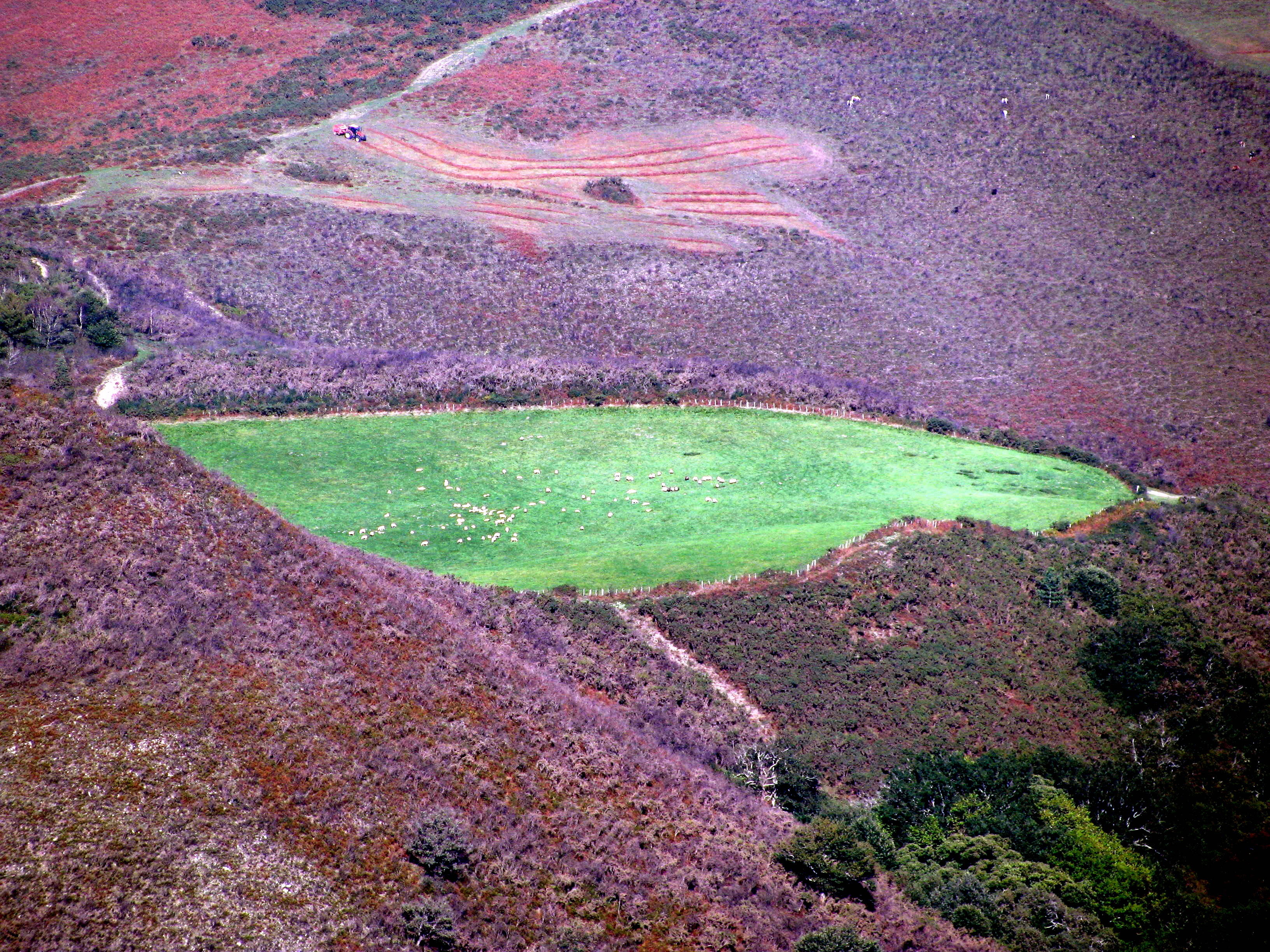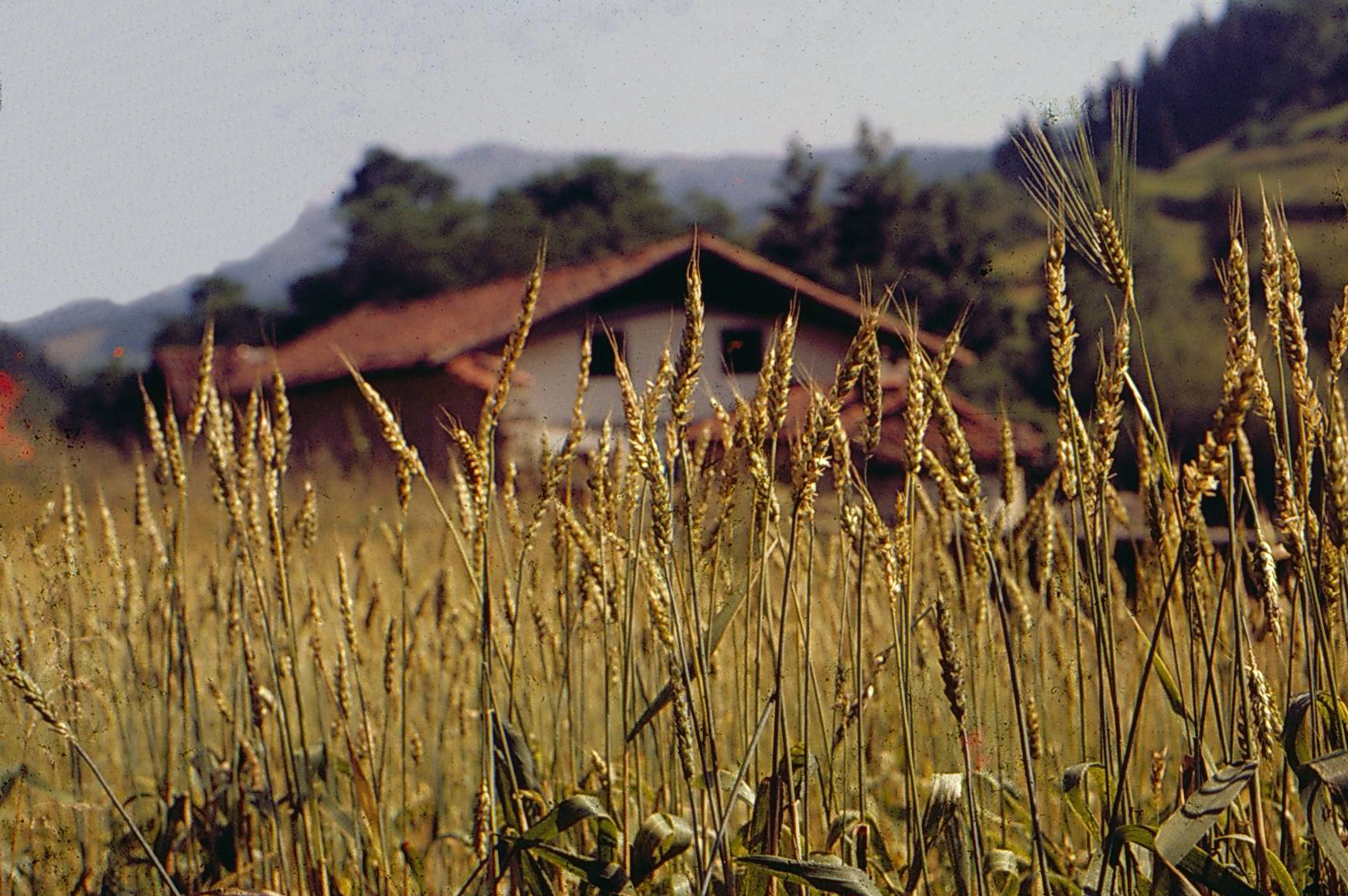Basque ethnography at a glance

Mechanized harvesting of ferneries. Urruña (Lapurdi), 2009. Michel Duvert.
Moorland (larrea) is the natural setting for the commons (herriko lurrak), historically open-access territory, where enclosures (borda-barrukiak) were built for livestock and clearings (labakiak or luberriak) opened and regularly burned (lur-erretzea) for maintenance. (more…)

Milkwomen. Sanctuary of Urkiola Collection. Ecclesiastical Historical Archive of Bizkaia.
Pure human force is the simplest and oldest form of transport. So it was that bundles of harvested grass were shouldered from the field and carried up to the loft for storage. Large baskets would later serve such purposes, and wheelbarrows came to enable and speed up the carriage of heavier and bulkier loads around the farm. Liquids were commonly conveyed in pails suspended from the ends of a slightly curved shoulder pole; a notch was cut at each end to prevent the vessels from slipping off. (more…)

The 2018 pastoral of Zuberoa: popular staging of the story of the chevalier de Béla. Photograph by Gilles Choury taken from larepubliquedespyrenees.fr.
The 2018 pastoral play will be performed in Mauléon-Licharre on 29 July and 5 August and tells the story of one of its most illustrious sons: Jean-Philippe de Béla, born on 8 July 1709 and known as le chevalier de Béla.
At the age of eighteen he departed from Mauléon to enrol Louis XV of France’s army and in 1731 was sent to Sweden as an undercover agent. He was appointed lieutenant colonel, later a member of the order of St Louis, and had a somewhat troubled military career, taking an active part in the Polish and Austrian succession wars. (more…)

Wheat field in Zeanuri (Bizkaia), 1981. Ander Manterola.
Now we are used to having bread any time, any day, anywhere, but it was not always so.
Before the 1950s, when wheat was still cultivated in our fields, the entire seed-to-loaf bread-making process was long and arduous. Every July during threshing the best grain was saved for seed. Wheat seeds were soaked (beratu) in water and later mixed with lime to get rid of rust (ludoia). They were kept in lime for three to four days before storing them in the loft. (more…)

